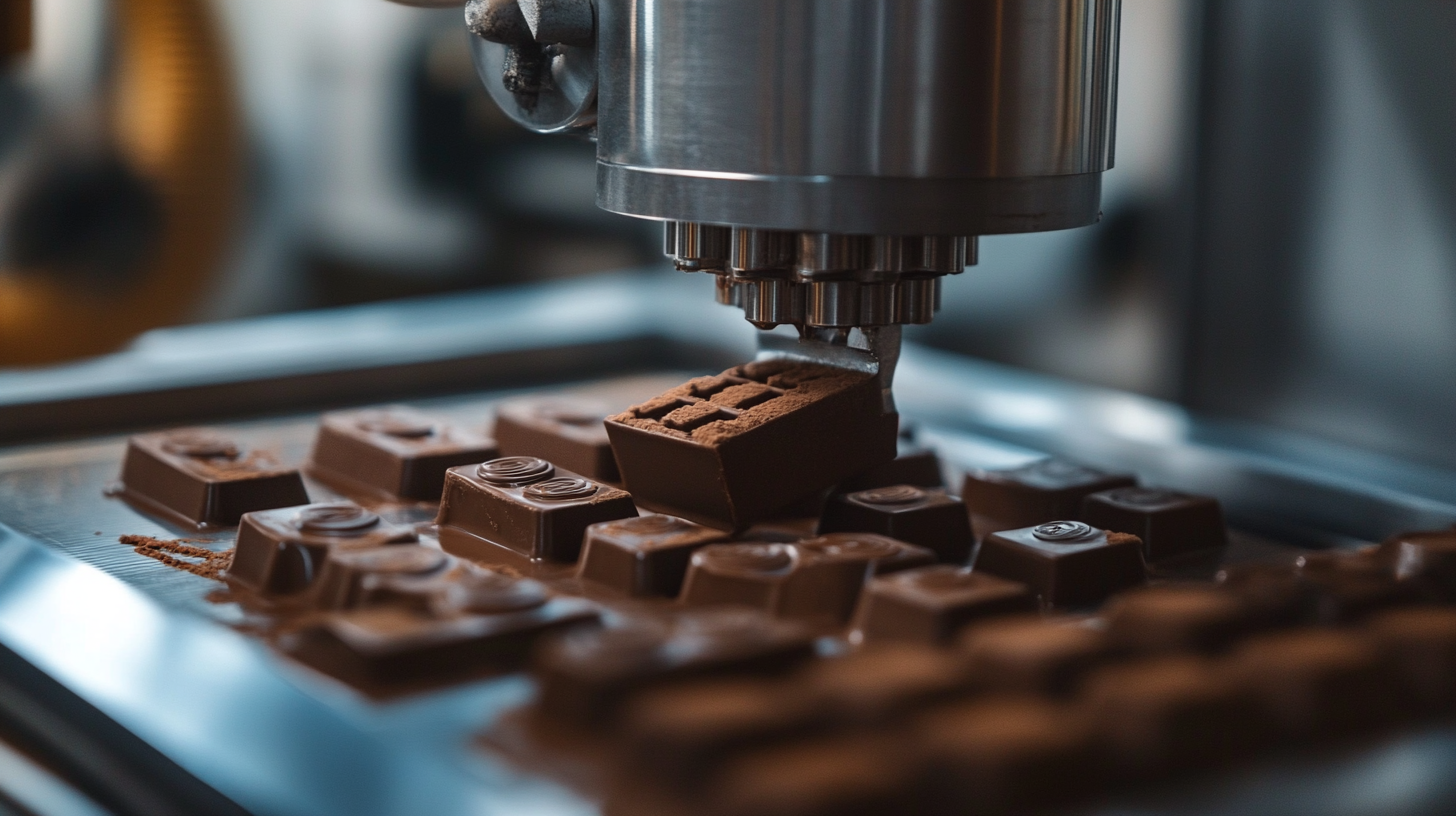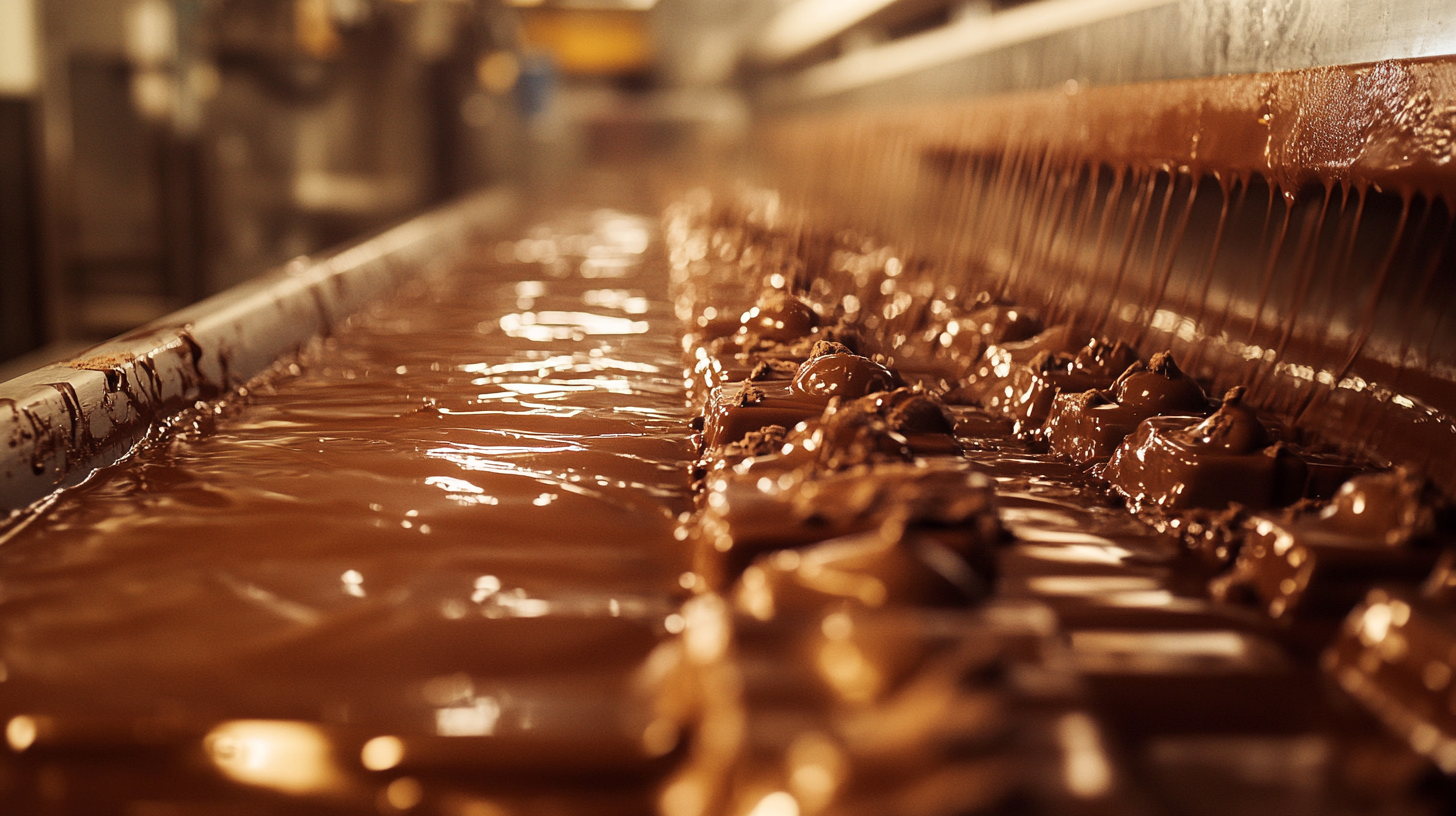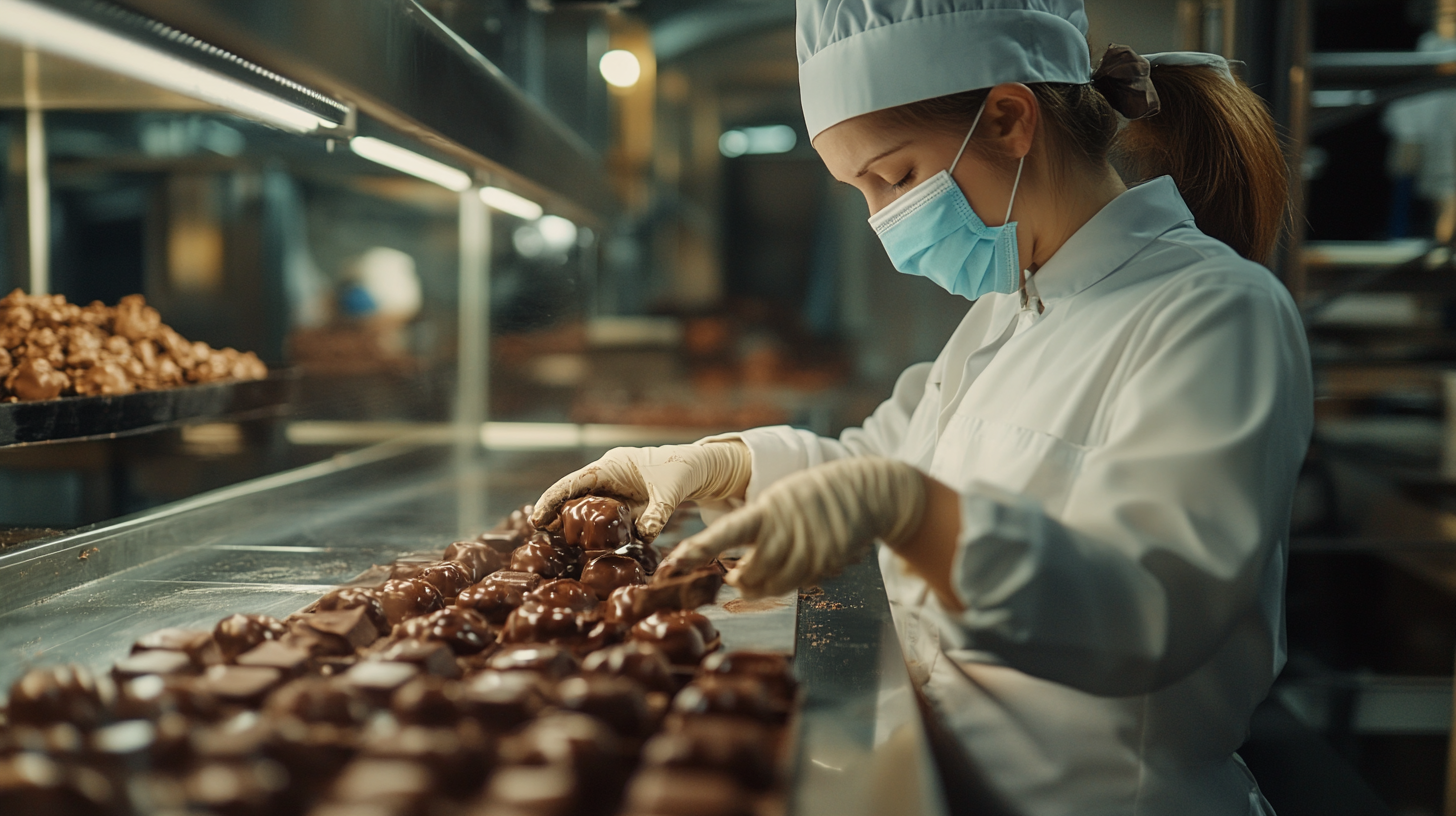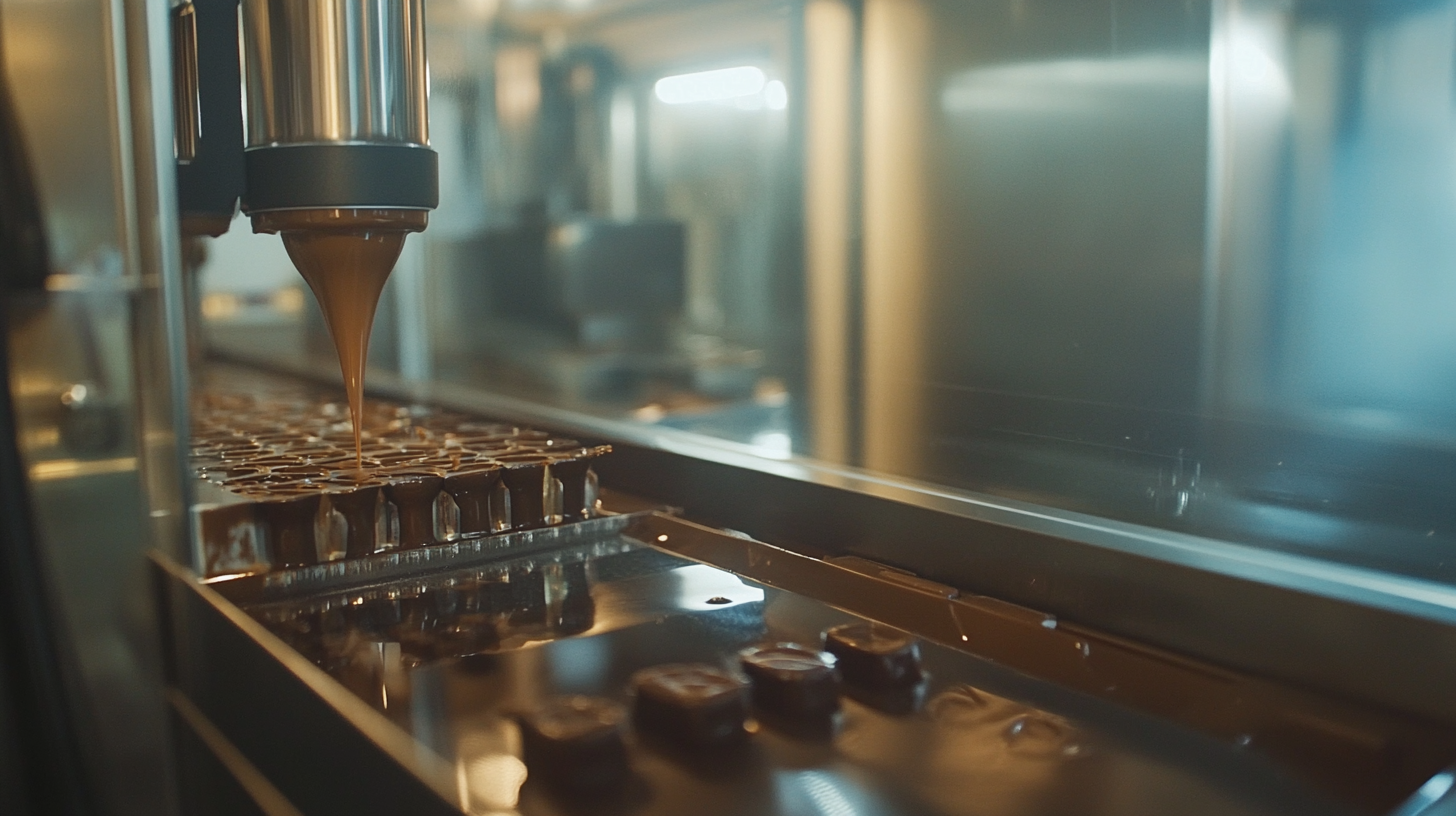Exploring the Technical Specifications of Chocolate Molding Machines and Tips for Optimal Production Efficiency
The chocolate molding machine has become an indispensable device in confectionery manufacture, determining the outcome of the efficiency of production and product quality. Allied Market Research has reported that the world chocolate market had a value of $130.09 billion in 2021 and will be worth $195.83 billion by 2028, growing at a CAGR of 6.2% between 2021 and 2028. As demand for innovative chocolate products in the market is soaring, manufacturers are using modern chocolate molding machines that simplify the process and also improve the visual appeal of chocolate products with precise molding capabilities.
They must, therefore, be specified technically to maximize the output and keep the consistency of qualities. For example, new technologies in temperature control and machine automation can significantly reduce production time while producing the end products that meet exacting quality standards. According to a recent study carried out by Research and Markets, such investments in modern chocolate molding machinery can return efficiency improvements of as much as 30%. This analysis discusses the very key features of chocolate molding machines while advising industries about a good way to set production efficiency by ensuring manufacturers can harness the solid investment that the growing chocolate industry has with cutting-edge technology.

Key Technical Features of Chocolate Molding Machines: Understanding Capacity and Speed
Capacity and speed-the two main features-guage the production efficiency of chocolate molding machines. Capacity refers to the amounts of chocolate molded by a machine during a specified time. Each machine has its own varied capacities; in choosing one, you must ensure that it meets the requirements of your production operation. For scaling-up companies, one of the most significant investments is buying machines that have higher capacity and hence increased throughput but not sacrosanct for quality. Another critical aspect that determines overall productivity is speed. The operation speed of a chocolate molding machine not only determines output but also cooling and setting. The quicker a molding machine, the smaller will the cycle time be. Therefore, there can be a quick turnaround time for the chocolates produced. Striking a balance is important-an extremely high speed may result in defects or uneven molding. So, the manufacturers have to judge those effective speed levels that suit their own production needs. In addition to speed and capacity, durability and technology incorporated into molding machines also play a vital part in performance. Modern machinery generally has this feature of programmable control that enables fine adjustment of the speed and capacity parameters, depending on the type of chocolate material processed or being used. Hence, once businesses are familiar with these specifications, they will be able to achieve wise decisions for better production efficiency while still attaining consistent high-quality chocolate products.

Material Selection for Chocolate Molding: Impact on Quality and Production Output
As mentioned earlier, chocolate molding requires a special mention regarding the application of materials in molding chocolate. That is what primarily affects the quality of the finished product as well as the overall performance of the method. Choosing an appropriate type combined with the best additives will boost the structural and gustation performance of molded chocolates. For example, the richness of cocoa solids in flavor will have to be balanced out in fat levels to realize the desired texture and shine of the finished product.
Another important aspect is the selection of the molding materials themselves. For example, molds made out of durable silicone or polycarbonate that are food-safe ease the chocolate products ejection and improve the general aesthetics of it. Moreover, these materials withstand high temperatures, which is very crucial in segmenting chocolate during the molding operation. Therefore, the proper choice of mold increases the potential production efficiency by decreasing the imperfections and increasing process fluidity.
Besides this, the proper tempering of chocolate needs to be given special attention. It thereby improves, in addition to the quality of the molds where shiny, crisp finishes are gained, the shelf life and consistency of chocolate. Material selection and strict temperature control will maximize the efficiency of production and raise quality standards for chocolate products.

Temperature Control in Chocolate Molding: Optimizing Results for Various Chocolate Types
Temperature control is a pivotal part of the chocolate molding, directly determining the quality and outlook of the final product. Different chocolates-whether dark, milk, or white-require specific melting and molding temperature ranges. For instance, dark chocolate usually melts at a much higher temperature, about 45-50°C (113-122°F), thereby maintaining the glossy finish and snap if cooled correctly. On the other hand, milk and white chocolates, with the presence of milk solids and more sugar content, should be melted somewhat lower in the range of around 40-45°C (104-113°F) to avoid caramelizing and reach a smooth and creamy texture.
Realizing this demands an understanding of the cooling stage apart from temperature monitoring. Once the molding takes place, the chocolate should preferably be cooled slowly to avoid thermal shock, which can cause blooming, a whitish film that appears when the cocoa butter comes to the surface. The controlled cooling tunnel can maintain even temperature and airflow, allowing the chocolate to set uniformly. If the temperature is properly managed throughout the molding process, the sheen and feel of the finished chocolates will be improved, thus endowing them with greater consumer appeal and market value.
Besides, based on the specific chocolate being processed, one needs to calibrate temperature settings for the chocolate molding machine. These artisans and producers working with immature methodologies need to actively test and indeed adjust those settings to yield findings based on the specific chocolate formulation, especially upon introducing new blends or flavors. This will lead to finding the melting and molding temperature settings that would optimize production efficiency while aiding in creating high-quality chocolate commodities.

Automation in Chocolate Molding: Enhancing Efficiency and Reducing Labor Costs
With recent advances in automation technologies for chocolate molding, it has become possible to improve production while decreasing labor costs. In the recent past, the package and molding industries increasingly know about automated systems that help manufacturers optimize their processes while reducing waste. Reports indicate that automation may give improvements in operational efficiency of nearly 30%, meaning significant savings over time.
For example, such a system in chocolate molding could change parameters in real-time suitable for maintaining production quality without much human intervention. Such a system shows innovation in other gears of manufacture, wherein AI-powered solutions improve both consistency and speed of the molding processes. In a recent case study, agglomerates that adopted such technologies recorded a doubling of their throughput while dramatically reducing their labor costs, making the business case for automation beyond contestation.
Additionally, sophisticated simulations are integrated to allow those manufacturers to predict and preempt problems before they arise on the shop floor. What translates into real benefits for their producers in terms of customized automated workflows is the combination of better simulation accuracy with the supply chain, whereby high-quality products remain maintainable while being adaptable to the fickle changes in demand from the marketplace. This will see the industry continuing with a transformation, and thus any investment made in the automation becomes essential in chocolate manufacturing for one to stay ahead in an area where efficiency and sustainability are treasured.
Maintenance Practices for Chocolate Molding Machines: Ensuring Longevity and Performance Stability
Just like in any other field, machine maintenance also contributes to the performance efficiencies of the molding machine used for chocolate processing and, as a result, its longevity. If a permanent maintenance routine were established, not only would early performance stability be maintained, but also downtime, which could be more expensive. The operator should develop a basic maintenance schedule for the successive occurrence of routine inspection of major parts such as belts, motors, and cooling systems. This organized approach toward existing wear and tear would eliminate unexpected stoppages and promote smooth running of the business.
Besides routine checks, cleaning protocols must be implemented to prevent contamination and maintain machine hygiene. Build-up of residues might lead to quality problems as well as mechanical failures. Operators must use food-safe cleaning agents and clean every area, including molds and conveyor systems, so that the products are never compromised.
The employee training aspect is also a lifeline for maintenance. Trained employees will understand when to flag early signs of trouble and are more likely to follow good practices regarding machine operation, which will, in turn, help ensure productivity and longevity. The actualization of the above underscores efforts toward maintenance aimed at maximizing production and product quality, which means a chocolate industry that is both efficient and profitable.